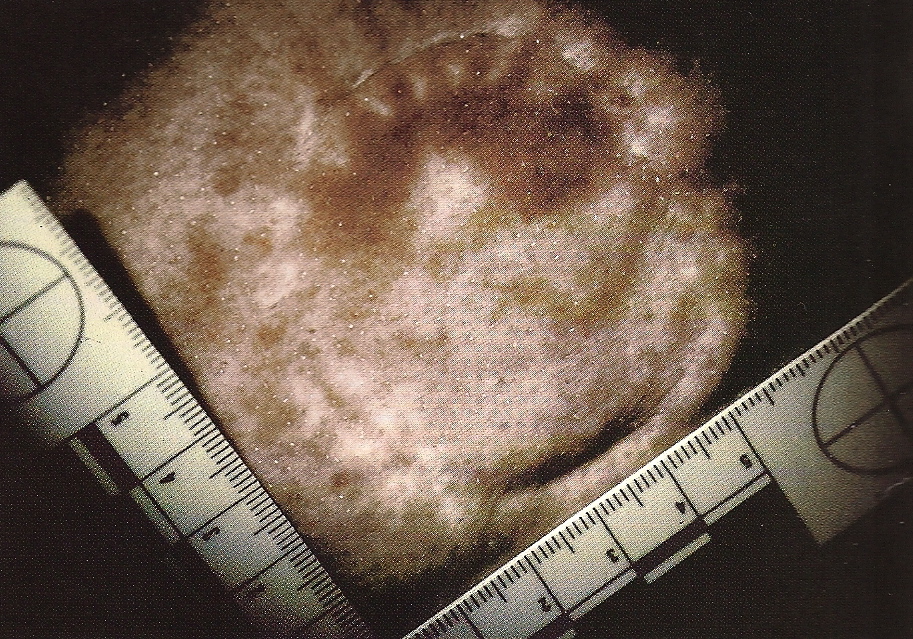I’m remiss in not getting this posted last week, but it’s been flagged and in my pile, so I knew I’d get it up here one of these days. My memory was jogged by a related resource newly released, though. So now we’ll make this a tandem event. NCVC and the National Coalition of Anti-Violence Programs published a joint study on LGBTQ crime victims, Why It Matters: Rethinking Victim Assistance for Lesbian, Gay, Bisexual, Transgender and Queer Victims (PDF). It’s available as a free download, and addresses, among other things, LGBTQ intimate partner violence. Worth a read.
Category: DV/IPV
In my Inbox: Health Reform & DV
Like many of you, I get a ridiculous amount of email. Much of it gets deleted without reading (not the mail from individuals, but the updates from organizations and agencies, which are often sacrificed for the sake of simply managing my workload). However, I try to always at least skim the mail from the Family Violence Prevention Fund. Which I did this morning, sipping jasmine tea and actively procrastinating completing a few expense forms that need to get done.
I received an email from a reader asking me to please post information about the financial cost of child abuse in the US. I’m happy to be able to post some relatively recent publications on the topic, the most specific being Prevent Child Abuse America’s 2007 report, Total Estimated Cost of Child Abuse and Neglect in the United States: An Economic Impact Study (PDF). (UPDATE: Click through for more current resources)
The University of Washington’s School of Nursing has created an online course for healthcare providers: Domestic Violence (DV): Recognizing and Responding to Victims and Perpetrators in the Health Care Setting. There are 2 modules–one on recognizing and responding to perpetrators, the other focused on victims. Modules are $10 a piece, and award 1 CEU each.
Traumatic Brain Injury & DV
VAWNet released a new collection today on traumatic brain injury and domestic violence. “It provides advocates and other professionals with tools to screen for TBI within the context of domestic violence as well as presentations, articles, and other relevant resources on the topic…The purpose of this collection is to: 1) increase knowledge and understanding of TBI within the context of domestic violence, 2) provide tools to advocates and other professionals to screen domestic violence survivors for TBI, and 3) highlight best practices.”
I cannot believe it’s already mid-March and I am *just* getting to this post. Between CCAW in Dallas (fantastic and more than 700 attendees) and a court martial that had me sequestered without internet, last week was a wash in terms of getting much done. Finally, though, it’s time for March’s Articles of Note. All of these are from the late February/March/April issues and electronic previews. As always, please keep in mind this in no way a comprehensive list; simply items that have caught my attention from a selection of peer-reviewed journals. Links lead to PubMed abstracts; from there you can choose what’s worth a.) paying for; b.) a pilgrimage to your nearest medical library; or c.) downloading via the full-text access you possibly have at your disposal.
Dating Matters
Don’t forget: you have until Wednesday, March 3rd to enter our newest giveaway. Just leave your response to the question in the Comment section to be eligible.
The CDC and Liz Claiborne Inc. have launched Dating Matters: Helping Teens Build Healthy Relationships. This free course focuses on helping educators, youth leaders, and others working with teens to understand the risk factors and warning signs associated with teen dating violence, as well as the importance of promoting healthy relationships.
Our Latest Giveaway!

Check out our latest giveaway, courtesy of our friends at GW Medical. Leave your answer in the Comments before 12pm ET on Wednesday, March 3rd to be eligible. THIS GIVEAWAY IS NOW CLOSED.
It’s here! Hot off the presses, G.W. Medical Publishing/STM Learning, Inc.’s most recent publication, Intimate Partner Violence: A Resource for Professionals Working with Children and Families, just arrived. To share our excitement, we’ve decided to offer it as this month’s giveaway. In addition to being multidisciplinary in nature, it features several chapters written by nurses, including a SANE perspective written by Dr. Linda Ledray. This month, you could be the lucky giveaway recipient by answering the following question:
Combating Teen Dating Violence
NIJ and the Government Innovators Network will host an expert chat to highlight prevention and intervention research on teen dating violence. The webinar will take place February 23rd from 4-6pm ET; you can register for the free session here.
It looks like IAFN just made 12 sessions available from the ATL Annual Scientific Assembly as webcasts. The audio plus PowerPoint can be reviewed for CEUs, and if you attended the Assembly, it’s free. Not to worry–if you couldn’t make it, it’s still available to you for $19.99 if you’re an IAFN member ($29.99, non-members). Sessions are 90 minutes a piece, so that’s a pretty good deal, CEU-wise.
Immigrant Women and Domestic Violence
Join Jewish Women International in a live webinar presented by Leslye Orloff, on March 4th from 12-1pm ET. The webinar will focus on immigrant women and domestic violence. Registration is $25 for non-members.
In my continuing quest to provide better access to free CME/CEUs for FHO readers, I decided to trawl through Medscape tonight and round up 20 offerings that can be completed quickly and easily. A couple caveats, though: 1.) not all of them are for RNs–physician and midlevel only CEs are marked accordingly; 2.) these things expire, and some more quickly than others [a few of them have about a 45 day shelf life], so check the dates to make sure you’ll get the credit you’ve earned; 3.) not all of these will be relevant to everyone’s practice–I’ve listed a pretty broad cross-section of topics that touch forensic practice in one capacity or another; and 4.) a few of these will look familiar as I’ve posted them on FHO before–apologies to the daily readers. Remember, Medscape requires registration to access these activities–it’s free, no worries.
The Economic Impact of Violence
AVA has some good resources on their site. One of the ones I really like is this 2009 presentation on the economic impact of violence, given by Dr. Amy Bonomi and Dr. Phaedra Corso. It’s definitely not the highest quality video, but the content is good stuff, and this is one of my favorite topics. Time runs about 43 minutes.
You can read more on this topic by visiting our clinical guide on the cost of violence.
Time once again for a run down of some of the new and noteworthy articles in the current literature (something I almost forgot to do this month!). All of these are from the late January/February/March issues and electronic previews. As always, please keep in mind this in no way a comprehensive list; simply items that have caught my attention from a selection of peer-reviewed journals. Links lead to PubMed abstracts; from there you can choose what’s worth a.) paying for; b.) a pilgrimage to your nearest medical library; or c.) downloading via the full-text access you possibly have at your disposal.

Last spring, I published a piece examining alternate light sources as a tool for semen and other bodily fluid detection. I promised I would come back with a piece on using ALS to identify and photograph injury not obvious or visible to the naked eye. Coincidentally I’ve been asked for some predicate questions by a prosecutor on this very issue, so in the spirit of bang for buck and all that, here you go:
Not surprisingly, there hasn’t been a ton written on this subject. I am including several links here, but unfortunately, they’re not all full-text. Some of these links don’t provide a guide for using ALS, so much as they support the use of ALS in the context of a broader approach to identifying injury. However, keep in mind: there is little research that supports using ALS for this purpose, so from an evidence-based standpoint you are out in the weeds. Be prepared to discuss this if one of your cases goes to court. (This is the kind of science I’m looking for on this subject, for those of you who have asked me.)
{My editorial here. Of note: “There is no evidence base, therefore, to support the use of an alternate light source as an independent tool to definitively interpret fluorescence as a sub- clinical bruise (i.e., bruising that is not visible to the naked eye). Given the high false-positive rate in detecting subclinical bruising, it is essential for medical and legal professionals to understand the resulting implications of promoting the use of ALS in a forensic setting.” (p. 5)}
Advances in Clinical Forensic Medicine
Alternative light source (polilight®) illumination with digital image analysis does not assist in determining the age of bruises
Enhancing the Visibility of Injuries with Narrow-Banded Beams of Light within the Visible Light Spectrum
Experience With Wood Lamp Illumination and Digital Photography in the Documentation of Bruises on Human Skin (full text)
Forensic Photography. Ultraviolet Imaging of Wounds on Skin
Forensic Ultraviolet Light in Clinical Practice: Evidence for the Evidence (full-text)
Marked Women (full-text)
Routine use of ultraviolet light in medicolegal examinations to evaluate stains and skin trauma
Soft Tissue Injuries in Victims of Color (Poster)
Spectrophotometric evaluation of the age of bruises in children: measuring changes in bruise color as an indicator of child physical abuse.
The Police Report Says He Choked Her–How Do I Prove It? (full text)
Use of an Alternate Light Source to Assess Strangulation Victims (full text for IAFN members and JFN subscribers)
 Bite wound viewed under ultraviolet light (Photo: Color Atlas of Domestic Violence)
Bite wound viewed under ultraviolet light (Photo: Color Atlas of Domestic Violence)
IPV & Pregnancy
White Ribbon Campaign Global Webinar
The White Ribbon Campaign is a Canadian organization focusing on men stopping men’s violence against women. I am a big fan, no question. (Personal disclosure: I have their posters plastered all over my office. They’re fantastic.). The Pixel Project is hosting a webinar featuring one of their staffers as part of their Weekend Webinar series.
Vicarious Trauma Webinar
The Family Justice Center Alliance has a webinar on vicarious trauma coming up February 11th from 9-11am Pacific. As with all FJCA webinars, it’s free, but preregistration is a good idea.
I’ve been meaning to get a new clinical guide up, but this one has been a challenge. See, injury photography hasn’t been written up extensively in the literature. What is out there is by and large pretty old (you’ll see several Polaroid references in the resources I share). Still, all of these have something to offer forensic practice. As with everything I post, due diligence, please. Read through the materials and decide for yourself whether these are useful and relevant to your work. And if you have other resources and tools you like not already listed here, by all means send them on and I’ll be happy to include them with attribution.
I had an email yesterday about finding CEUs for forensic nurses, which made me think that it’s probably a good time to remind people about the free CEUs available online from IAFN. If you haven’t yet checked them, I encourage you to do so, because, did I mention they’re free (unless you’re not a member, then they’re $10 each)? And they’re specific to forensic nursing, which is tough to find. As you know, a lot of the CEs out there are either too simple or too tangential to our work, so offerings like these are invaluable.
